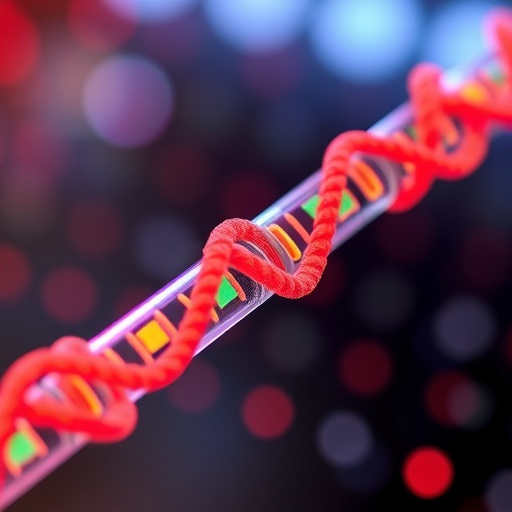The emergence of advanced genetic and genomic manipulation techniques has ushered in unprecedented possibilities and challenges, particularly in the realm of sports. With the increasing sophistication of gene transfer, gene delivery, and gene editing methodologies, there lies a significant concern regarding their illegal application as gene doping. Such practices have captured the attention of regulatory bodies, notably the World Anti-Doping Agency (WADA), which has set stringent guidelines to combat gene doping and has introduced quantitative real-time PCR (qPCR) detection methods to identify transgenic interference in sporting events.
The challenge that arises with qPCR technology is its inherent limitations when faced with new doping targets. The specificity and efficiency of detecting potential gene doping markers can be compromised if there are codon variations in the target genes. Given this backdrop, recent research sheds light on the necessity of comprehensive methodologies to enhance the detection spectrum and mitigate the risks posed by gene doping in competitive sports. This study emphasizes preparations centered around the human erythropoietin (hEPO) gene, a notable target in the gene doping landscape.
In the realm of gene doping, the hEPO gene has gained notoriety because of its pivotal role in erythropoiesis—the production of red blood cells. Athletes using gene doping techniques may aim to increase their hEPO expression deliberately to enhance oxygen delivery to tissues, thereby improving stamina and performance. The study meticulously outlines the preparation of standard materials from both genomic and transgenic versions of the hEPO gene. These preparations enable the careful design of qPCR primers aimed at exploring the impacts of codon alterations on the efficiency of gene doping detection.
Through rigorous assessment, the researchers demonstrated that while well-constructed qPCR assays can effectively detect signals from transgenic origins, any shifts in the codon structures present significant challenges. This undermines the assay’s detection capabilities, accentuating the need for heightened vigilance in monitoring the landscape of gene doping. Moreover, the investigation included practical simulations representative of real-world gene doping scenarios. By blending genomic and transgenic versions of the hEPO gene, the researchers unveiled critical insights into the limitations of qPCR methodologies in such contexts.
The results indicated that qPCR could successfully identify wild-type variants of the hEPO gene, while markedly failing to detect transgenes with altered codons. This gap in detection presents a worrying prospect for competitive integrity and athlete safety, as it suggests that current methodologies may be insufficient to thwart sophisticated doper strategies. The researchers posited that such inconsistencies demonstrated that qPCR might not always guarantee reliable detection of all gene doping instances, especially with the complexity of codon diversity.
To validate the challenges highlighted by qPCR methodologies, Sanger sequencing was employed as an alternative toolkit for detection. Unlike qPCR, Sanger sequencing provides a more robust framework capable of identifying gene doping, irrespective of potential mutations or codon alterations. This illuminating comparison reveals the necessity for continued evolution in detection technology to keep pace with the rapid development of manipulation techniques in gene doping.
The study ultimately calls for the incorporation of high-throughput sequencing as a complementary tool in the anti-doping arsenal. Moving beyond the limitations posed by traditional qPCR, these next-generation sequencing approaches would allow for broader and more inclusive detection capabilities, significantly enhancing monitoring efforts while safeguarding sport’s integrity. The challenge of unsanctioned genetic manipulations remains daunting, necessitating collaborative endeavors within the scientific community to refine detection methodologies continually.
There is a pressing need for a proactive approach that addresses the technological limitations in sports medicine and anti-doping frameworks. The findings from this research highlight the importance of adapting to the evolving landscape of sports and the tools that athletes may exploit. As the sophistication of gene doping techniques evolves, so too must the strategies employed to detect and deter these practices.
Moreover, the findings bring to the forefront the implications of emerging technologies not only in the detection of gene doping but also in addressing concerns around ethical considerations and the long-term health of athletes. As the scientific community continues to unravel the complexities of genetic manipulation, these discussions must intertwine with the overarching goals of fairness and integrity in competitive sports.
In conclusion, the study reinforces the critical landscape of genetic alterations’ detection in sports, advocating for innovative technological advancements. The operational efficacy of qPCR has limitations, particularly as athletes potentially leverage these manipulations for performance enhancement. As the research community, regulatory bodies, and sports organizations work collaboratively, it is paramount to remain vigilant, adopt advanced methodologies, and uphold the ethos of fair play in athletics.
The dialog surrounding gene doping, detection techniques, and genetic ethics is only beginning. It is crucial for all stakeholders in sports to engage meaningfully with these developments, ensuring that the world of athletics remains clean, competitive, and equitable for all participants.
Subject of Research: Gene Doping and Detection Techniques
Article Title: Codon Changes Challenge PCR-Based Gene Doping Detection
Article References:
Wu, D., Ding, S., Liu, N. et al. Codon changes challenge PCR-based gene doping detection. Gene Ther (2025). https://doi.org/10.1038/s41434-025-00569-y
Image Credits: AI Generated
DOI:
Keywords: Gene doping, EPO gene, gene editing, qPCR, Sanger sequencing, anti-doping, detection methods.




